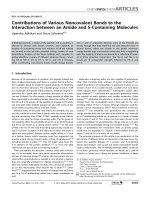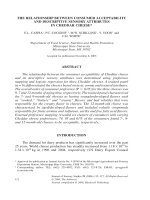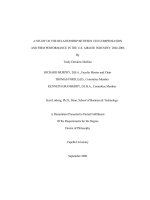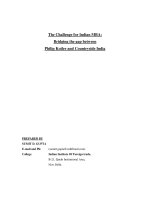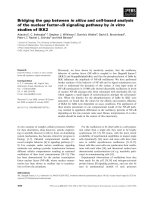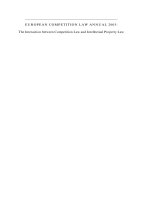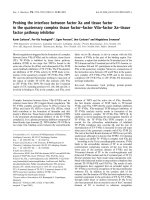229. The Difference Between Giving Credit and Taking Credit ppsx
Bạn đang xem bản rút gọn của tài liệu. Xem và tải ngay bản đầy đủ của tài liệu tại đây (74.85 KB, 2 trang )
The Difference Between Giving Credit and Taking Credit: Plagiarism
Written by Nancy Steinbach
20 May 2006
I'm Steve Ember with IN THE NEWS in VOA Special English.
This is the opening weekend for the movie version of “The Da
Vinci Code.” The mystery about art, religion and murder is
based on the book by Dan Brown. The latest reports say his
three-year-old book has already sold sixty million copies
worldwide.
It also led to a trial earlier this year in Britain. Two writers
accused Dan Brown of plagiarism stealing someone else's
words or ideas. They said he copied the main idea of their book
"The Holy Blood and the Holy Grail."
A High Court judge in London did not agree. He said the idea was too general to be considered
protected under British copyright laws.
Recently a number of stories involving accusations of plagiarism have
been in the news.
Kaavya Viswanathan, a nineteen-year-old student at Harvard University,
lost a major book deal. It appeared she copied from five other writers in
parts of her book, “How Opal Mehta Got Kissed, Got Wild and Got a
Life." Her publisher, Little, Brown & Company, finally withdrew the
young-adult novel from sale.
Earlier, she told the New York Times that some of the plagiarism may have happened because she
remembers what she reads. "I really thought the words were my own," she said.
Another situation involved the chief of Raytheon, a leading defense company. William Swanson
wrote a small, unpublished work called “Swanson’s Unwritten Laws of Management." The company
offered it free to anyone interested.
But some of it came from material that did not receive credit, including a nineteen forty-four book,
"The Unwritten Laws of Engineering."
Mister Swanson apologized. He said he meant the advice as an expression of old rules, but in terms of
his own experience over the years. Raytheon directors took action to punish him with about one
million dollars in lost pay. Mister Swanson earned seven million dollars last year.
Plagiarism has always been an issue in schools. Teachers say the Internet has made it much easier to
find and copy material. But teachers have their ways to use the Internet to catch plagiarism.
Turnitin, for example, is a Web site that offers a service to identify papers that contain copied
material. It says a common mistake is to believe that electronic material is not private property in the
same way books are.
Theater in Hong Kong
Kaavya Viswanathan
Punishments for plagiarism differ in schools. A high school student might fail the project. A college
student might fail the class and be suspended for a year. In some colleges and universities, a student
or professor caught plagiarizing might be told to leave and never return.
Using information from experts is usually OK, as long as where the material came from is identified.
Any material copied word-for-word is supposed to appear inside quotation marks. Where people get
in trouble is when they try to claim other people's words as their own.
IN THE NEWS in VOA Special English was written by Nancy Steinbach. I’m Steve Ember.

